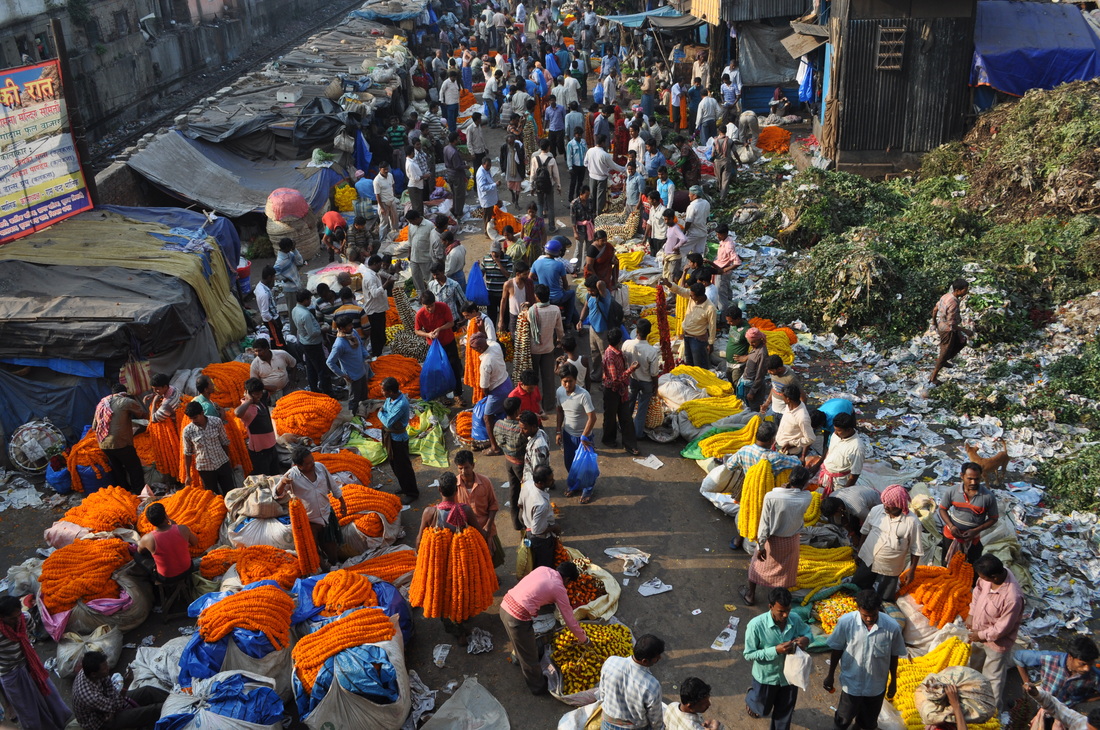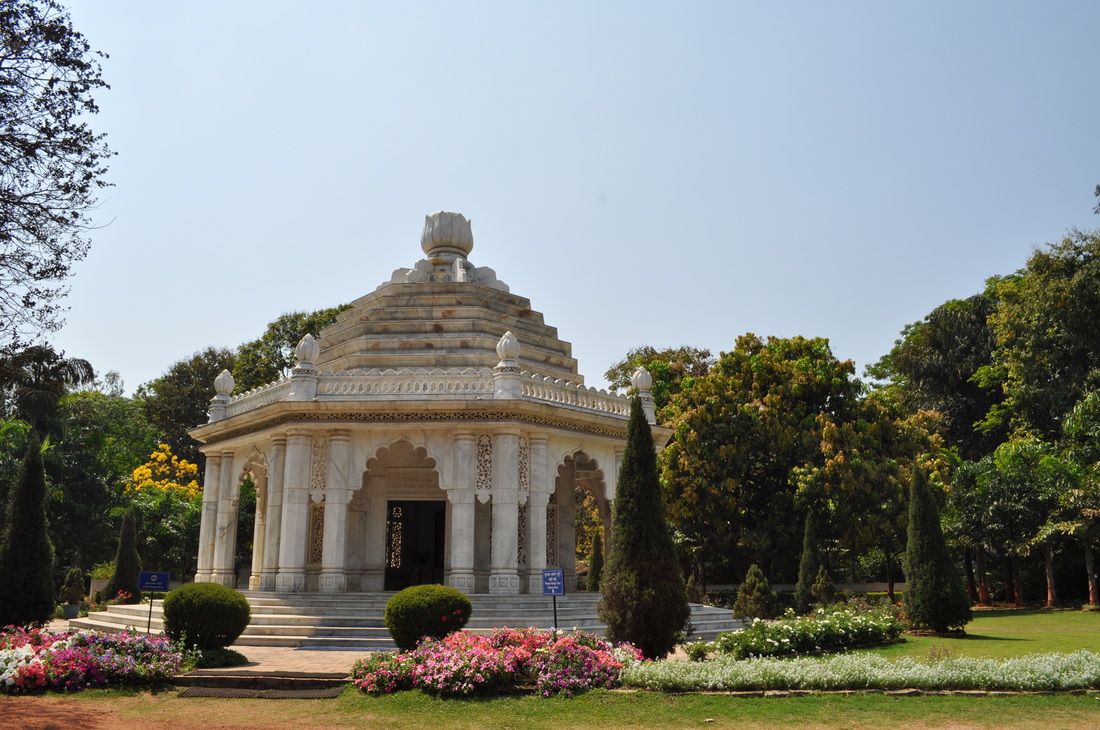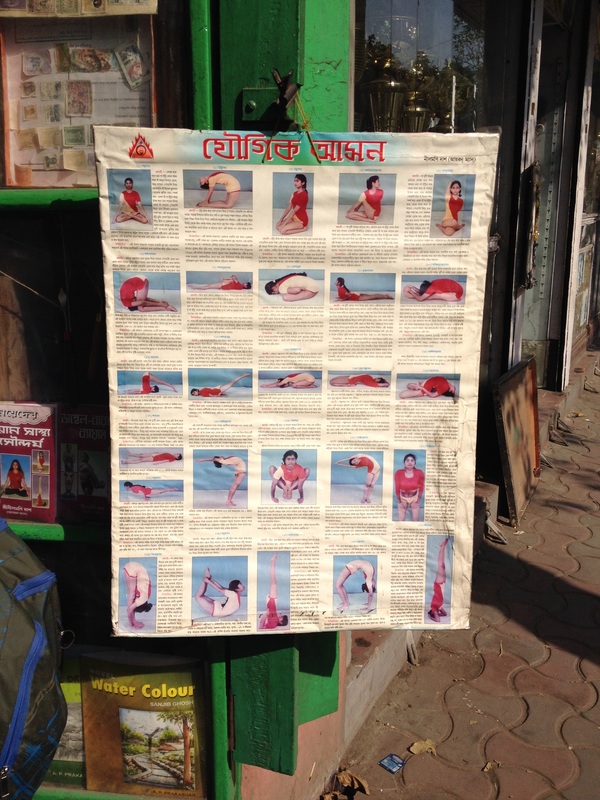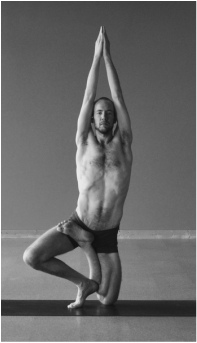|
I am up again in the wee hours. I arise about 3:30am and go into the men’s room to practice. I begin with several exercises for breathing, the neck and shoulders, followed by warming up the torso, hips, legs and feet. Only then do I proceed to do some postures.
There is a separation here between “therapeutic exercises” and “asanas (yoga postures)”. Most of what we have learned so far in our training has been the therapeutic exercises, designed for very specific benefit to the physical body and the systems of the body. We began to discuss yoga postures yesterday, but they have a slightly different intention as far as I can tell. I have yet to tease that out. During my practice this morning I am struck by the conflict between intuition and discipline. It is one thing to begin practice and follow the urging of the body and mind, doing exercises and postures that are calling out to be done next. My practice this morning is like that. It is very different from having a plan for practice or a set series of exercises to do regardless of how you feel or what your body may be asking for that day. I think there is value in both. The trick as always is to find the balance and get the most benefit from both sides. We begin our training today with discussion of diseases, causes and symptoms. The second session covers several seated postures and mudras, and we begin to cover pranayama (breathing) exercises. At lunch Jeff tells us about a study they sponsored that found some evidence that pranayama and chanting increase the production of nerve growth hormone. Amazing. I take a nap between the afternoon and evening training sessions. It is the middle of the night in Wisconsin and I sleep very deeply. I wake up to go to class and am not sure what day it is. Is it morning already? We discuss more diseases and the chakras related to several postures. Muktamala rattles off posture names in Sanskrit or Bengali, and it is good for my mind to keep up. She may call a pose any of several different names in 3 different languages, and we have to know what she’s talking about.
0 Comments
It is 2am in Calcutta. I have been up for the last two hours because my body is still on Wisconsin time, halfway around the world. Once I realized that sleep would evade me, I arose and bathed. I went into the large practice room where the women practice (it is full of pictures of advanced yoga postures) and practiced pranayama (breath control). How wonderful to practice in the middle of the night when the whole house is still. There is no rush, no pressure. Just patience, peace and stillness. Now I have moved to the men’s room, where the walls are covered in pictures of bodybuilders, extreme acts (pressing a spear with the eye, eating a cobra) and contortionism. The men will arrive at 6am sharp.
The 9 of us meet on the rooftop terrace of the Ghosh school at 6am to practice together. We do the 26, Jeff leads. It is hot and humid, so we all sweat significantly. A wonderful way to begin the day. Jerome, Ida and I set out on foot toward the college district in search of a very specific juice stand. We realize too late that most shops in Calcutta don’t open until 10 or 11am, and it is only 8:30. So no juice for us this morning. We go to a coffee shop for sweet coffee and buttered toast, but even the coffee shop doesn’t open until 9am. How strange. Our practical training this morning begins with asanas. Up to this point we have only learned therapeutic exercises. Asanas are something different. We cover several standing postures and several done lying on the floor. I especially love the many variations of Cobra Pose (Bhujangasana) and Wind Removing Pose (Pavanamuktasana). So many different ways to do these positions, all with slightly different purpose. This is why I am here! The evening session is a lengthy discussion of the benefits, contraindications and muscular usage of many asanas. I have already filled an entire notebook, and we’ve only been here for 3 days. This evening we go to Nilmoni Das’s place to visit his son Swampan. We met him months ago when we were here - a sweet and generous man. We take him a copy of Bose’s 84 Yoga Asanas and a poster of the asanas. He is kind and complimentary. We don’t stay long. Tomorrow will be a big day. Three training sessions. Being as jet lagged as we are, everyone is awake at 3 or 4am. Many of us get up to practice some yoga before the regulars arrive at 6am. Once they arrive, the locals practice their prescriptions in the large rooms which are separated by men and women. I practice with the men for awhile, working on some neck and shoulder exercises that Muktamala taught us yesterday. I’m not sure if it is my newness, my height or my white skin that draws the stares. After awhile I retire to a more private place to practice nauli and some breathing exercises. Ideally I would be comfortable practicing in front of so many strangers, but I feel far more at ease in private.
To practice, the men strip down to their undershirts and boxer shorts. It is no wonder that they separate men and women. I am not sure what the women wear, but this is nothing like the spandex-clad, group-led, quiet and focused yoga classes we have in the States. The men chat and are distracted. They check their phones and futz about, occasionally doing their exercises. It is more like a men’s club locker room than anything I would think of as a yoga studio. Strangely, I have yet to see anyone practice a yoga “asana.” Everyone is doing simpler, therapeutic exercises. I think that these exercises precede the practice of asana, but I am not sure. I hope to learn that in the coming weeks. Training this morning finishes the practical instruction of the pelvic exercises and moves on to almost 20 exercises done on the back. We write down descriptions and explanations of each exercise before trying it ourselves. For the second day in a row, we go across the main road to a little convenience store that has bottled water, sparkling water and soda. It is a little luxury to drink a cool sparkling water. It feels like home in the mouth and the stomach. Conversation lingers after both breakfast and lunch. We discuss the benefits of practicing at different levels of heat. Jeff and Mardy have a non-profit organization that sponsors studies about yoga. They are just finishing one about the benefits of practicing the 26 at different temperatures. Jeff talks extensively about nitric oxide, arterial expansion and glucose metabolism. I find it very interesting, glad that someone is doing this work. After lunch we discuss teaching with a set script, traveling and sticking to the “house rules” of each studio, students who wear earplugs and many other things. I am exhausted by the evening training session, so I go to bed immediately afterward, skipping dinner. The travel wasn’t as difficult as I remembered. Perhaps it is because we knew what to expect from the food, the flight times, the airports and taxis. Perhaps it is because we traveled the entire way with fellow yogis Jeff and Mardy. We arrived at the Calcutta airport at 2am local time and, through some small miracle, the taxi brought us directly here to the Ghosh school. Calcutta taxis have a way of getting “lost” on their way to even the simplest of destinations, partly because the city is so old, complex and poorly marked.
Jeff, Mardy, Ida and I arrived at the Ghosh school at about 4am. None of us could sleep, so Jeff and I stayed up talking with Jerome, who had arrived a few days prior. At about 5:30am, the three of us set out on a small walking excursion around the neighborhood, exploring alleyways, local landmarks, and the preparations for the upcoming Durga Puja celebration. The smells of Calcutta are unmistakable and impossible to forget. A combination of cooking, garbage, incense, excrement, smog and decay. In our first class with Muktamala, we covered many exercises for breathing, shoulders and neck. Then we began discussing the pelvis. Our evening session was a long discussion about the benefits and contra-indications for several postures, also an in-depth exploration of a couple diseases. The rest of the day was spent settling in to our accommodations here at the Ghosh house and resting. The jet lag and long day of travel create a unique form of exhaustion. The body gets hot, the mind gets fuzzy. The only cure is sleep and time. So I am trying to rest. There are 9 of us here from the US. Jeff and Mardy are from Austin, Jerome from DC, two women from New Orleans and two women from LA. Tomorrow we fly for 22 hours to Calcutta, India. We will spend 5 weeks there studying at Ghosh's Yoga College of India, led by Muktamala Mitra, Bishnu Ghosh's granddaughter.
I am completely open to what we may learn. I have almost no expectations, other than to soak in the atmosphere of living in the Ghosh house and practicing in the rooms where BC Ghosh, Buddha Bose, Gouri Shankar and Bikram Choudhury practiced. I plan to use much of my free time to continue and expand my pranayama practice, something that has brought me great comfort, joy and peace over the past few years. I feel ready to take it to the next level, and what better place to do that than India? (Admittedly, the air is not so good there.) I also plan to write about the experience here in my online journal. I am starting a new "Category" on the right column called "Ghosh Study In India." When walking down the streets of Kolkata, there are 7 smells that are ever-present, battling each other for domination in the nostrils.
1. Incense 2. Garbage 3. Car Exhaust 4. Food from street vendors 5. Burning charcoal from street vendors 6. Excrement, human and animal 7. Burning garbage Our train arrives at the Howrah station at 7am. It is across the Ganges from Kolkata. We briefly try to catch a taxi but the line is incredibly long and confusing. We decide to walk outside of the train station to try our luck but end up walking all the way across the Howrah bridge and into Kolkata. We cross the Ganges and pass the garland district where dozens of piles of flower garlands are stacked for sale. Bright orange on the left, bright yellow on the right.
Once in Kolkata, we catch a taxi and return to the hotel to bathe and eat. This afternoon is our one time to be tourists. We go all around the city just looking at the shops and taking it in. Jerome gets gifts for his family, I get a couple Indian cotton shirts, and we all get some tea from Dolly's Tea Shop. Arup tells us a bit about tea, its history and quality. He tells us about the first crop of the season after the winter called the First Flush, that is the most flavorful and the most valuable of the tea crops of the year. We go into a shop full of Kashmiri goods. They have some Cashmere, very nice stuff. But there is an even better quality wool product that I have never heard of. I can't even remember the name of it to write here. They have scarves and shawls made of this very fine wool. It is beautiful, soft and supposedly very warm in the winter, though I doubt it would suffice here in the Midwest in February. Kashmir is also known for it Papier Mache that they lacquer and hand paint in intricate designs. There are ornaments, boxes and all sorts of items. After being tourists we go to Chitralekha's (Bose's daughter in law, mother of Pavitra) home for dinner. We eat around 7 which is apparently very early for Indians who eat around 10. So they feed us but don't eat. A strange feeling. The best part of the evening is the conversation. She shows us old pictures of her family and tells us many stories. She is modest so I won't divulge any revealing stories here, but she is full of knowledge and insight about yoga, physical culture, Calcutta, Bishnu Ghosh, Buddha Bose and even Bikram. I am more than happy to soak it in. To simply listen to her stories and follow whatever narrative whims she may have. Jerome is a little more pointed, chiming in from time to time with historical queries and factual questions. They feed us lots of food. I thought that Americans were generous hosts, but they rivaled any I have met. I was the only one of the three of us adventurous enough to try paan, a digestive that is a leaf wrapped around some fennel seeds, other seeds that I don't recognize and a red paste. At first it is pleasant, after awhile it is very bitter. Not bad. I has been a relaxing day. A lot of walking, a bit of culture and some good conversation. All in all, very human. The overnight train is brutal. It is cold and windy and we are unprepared. We brought no blankets, so I spend the entire ride curled tightly with my hands tucked in my armpits, head against a backpack, in and out of a restless sleep. We are jolted awake at 4:30am by the cry of "Chai pijiay! Chai chai chai!" from the vendors wandering from car to car.
We arrive at Yogananda's ashram in the middle of the morning "Energization Exercises." These are exercises designed to awaken the flow of energy in the body and prepare it for the coming meditation. It is all very friendly, so we jump right in to the exercises with curiosity and relief to be moving our bodies after a long night on the train. After a few minutes we head inside the Meditation Temple to sit for a meditation of about 40 minutes. It is lovely and refreshing. The energy of this place is at once strong and peaceful. The grounds are immaculately kept, with flower beds, swept paths, alcoves for meditation, and a few monuments of incredible beauty. We spend an uneventful day on the lawn, surrounded by devotees walking and meditating in the gardens. We doze, discuss the developments of the book and start developing a handful of asana series for later use. We join the devotees for tea and the evening exercises and meditation which is about an hour and a half long. I focus my eyes firmly on the candle at the front of the temple, choosing to practice Concentration (Dharana) instead Meditation (Dhyana). I actually have a hard time staying awake during he 2nd half. I am exhausted from missing last night's sleep. We catch the 9:30pm train back to Kolkata. We have blankets this time. I sleep deeply the whole way. This morning we are going to Yoga Cure to speak meet with Rooma and Shibnath De. Rooma is Buddha Bose's daughter and together they run Yoga Cure. We aren't sure what to expect after getting shunned a couple days ago, but we have been unknowingly careless with their family matters. Today we are hoping they will talk to us.
Rooma and Shibnath are gracious hosts. We discuss the manuscript and they tell us many stories about the past including BC Ghosh, Buddha Bose, Bose's sons Ashok and Arun, Yogananda, and Bikram. I will write more about the specifics at a later date. After the meeting we head to the book district in search of old, rare and out of print books that are only available in Kolkata. I find a beat up, ancient copy of Yoga Hygiene Simplified by Shri Yogendra, another translation of Patanjali's Yoga Sutras, and a translation of the Rg Veda among many other things. Jerome is looking for copies of an old pamphlet the BC Ghosh edited called Byayam, so we scour the side streets and rare book dealers. Down one of the streets we stumble across a book stand that is displaying this poster from Das' school. The poster is yoga asanas, 26 of them, performed by girls. The instruction is in Bengali. They also have a similar poster of boys and one of boys and girls mixed. I get all three. Together they cost about 90 cents. We return to the hotel to eat and shower, then head to the Howrah train station across the Ganges. Our train to Ranchi leaves at 10:30pm and will arrive at 7:30 tomorrow morning. |
This journal honors my ongoing experience with the practice, study and teaching of yoga.
My FavoritesPopular Posts1) Sridaiva Yoga: Good Intention But Imbalanced
2) Understanding Chair Posture 2) Why I Don't Use Sanskrit or Say Namaste 3) The Meaningless Drudgery of Physical Yoga 5) Beyond Bikram: Why This Is a Great Time For Ghosh Yoga Categories
All
Archives
November 2017
|





 RSS Feed
RSS Feed